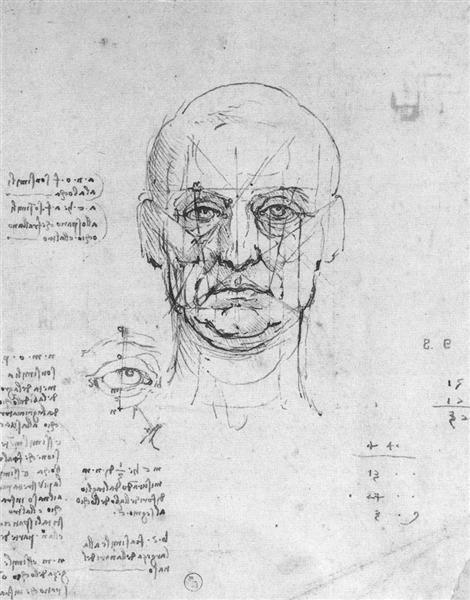 Study on the Proportions of Head and Eyes - Leonardo da Vinci (c. 1500)
Study on the Proportions of Head and Eyes - Leonardo da Vinci (c. 1500)

Listening For Early Signs Of Alzheimer’s Disease
In-Ear Microphones Could Monitor Sounds Of Eye Movements For Neurological Decay
November 19, 2024 - Acoustical Society of America
Summary:
Alzheimer’s disease affects more than 50 million people worldwide, often devastating both the individuals who have it and their families and loved ones.
It has no known cure, and the slow, progressive nature of the disease makes early diagnosis difficult.
Researchers from École de Technologie Supérieure and Dartmouth University are investigating the use of earpiece microphones to spot early signs of Alzheimer’s.

People with Alzheimer’s exhibit a loss of motor control along with cognitive decline.
One of the earliest signs of this decay can be spotted in involuntary eye movements known as saccades.
These quick twitches of the eyes in Alzheimer’s patients are often slower, less accurate, or delayed compared to those in healthy individuals.
 The researchers will track abnormal saccades, an early sign of Alzheimer’s, using both eye-tracking technology and in-ear hearables. Credit: Boutros et al.
The researchers will track abnormal saccades, an early sign of Alzheimer’s, using both eye-tracking technology and in-ear hearables. Credit: Boutros et al.
“Eye movements are fascinating since they are some of the most rapid and precise movements in the human body, thus they rely on both excellent motor skills and cognitive functioning,” said researcher Arian Shamei.
Detecting and analyzing saccades directly requires a patient to be monitored by eye-tracking equipment, which is not easily accessible for most people.
Miriam Boutros and her colleagues are exploring an alternative method using a more ubiquitous and less intrusive technology:
Earpiece Microphones
This research is led by Rachel Bouserhal at the Research in Hearing Health and Assistive Devices (RHAD) Laboratory at École de Technologie Supérieure and Chris Niemczak at the Geisel School of Medicine at Dartmouth University.
“We are using a device called a hearable,” said Boutros.
“It is an earpiece with in-ear microphones that captures physiological signals from the body.
Our goal is to develop health-monitoring algorithms for hearables, capable of continuous, long-term monitoring and early disease detection.”
Eye movements, including saccades, cause eardrum vibrations that can be picked up by sensitive microphones located within the ear.
The researchers are conducting experiments with volunteers, giving them both hearables and conventional eye trackers.
Their goal is to identify signals corresponding to saccades, and to differentiate between healthy signals and others that are indicative of neurological disorders like Alzheimer’s.
They hope one day their research will lead to devices that can perform noninvasive continuous monitoring for Alzheimer’s along with other neurological diseases.
“While the current project is focused on long-term monitoring of Alzheimer’s disease, eventually, we would like to tackle other diseases and be able to differentiate between them based on symptoms that can be tracked through in-ear signals,” said Shamei.

 Thought in the Eyes - Oleksandr Aksinin (1966)
Thought in the Eyes - Oleksandr Aksinin (1966)

Sources: @ fair use
Materials provided by Acoustical Society of America.
Artwork: @ Oleksandr Aksinin



Thank you for your support of Through the Looking Glass and for being a patron of science and the arts.
Best wishes!
~ Pearl Andersen

“Only art and science make us suspect the existence of life to a higher level, and maybe also instill hope thereof.”
~ Ludwig van Beethoven
